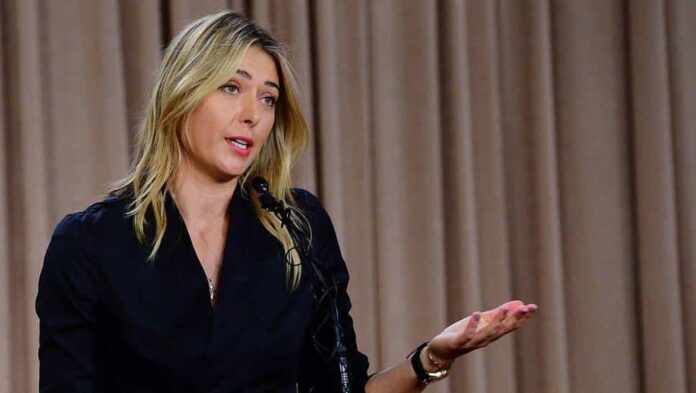Nine years ago, tennis superstar Maria Sharapova shocked the tennis world with her doping confession, which has not been without consequences.
“I know many of you thought I would retire, but if I ever announce my retirement, it probably won’t be in a hotel in downtown Los Angeles with this rather ugly carpet.”
On March 7, 2016, tennis superstar Maria Sharapova used exactly these words in front of countless sports reporters. The carpet on which the Russian was standing was indeed anything but pretty to look at – unless you like large red ornaments on a yellow background.
Just one day before, the team of the athlete had invited to a press conference and promised a “major announcement”. Among reporters and tennis fans, there was immediate speculation as to whether the five-time Grand Slam winner would announce her retirement. But it turned out differently.
Doping confession shocks the tennis world
And what finally came shocked the tennis world. Maria Sharapova, one of the most successful players of her time, announced that she had failed a doping test.
“I received a letter from the ITF stating that I failed a doping test at the Australian Open. I take full responsibility for this,” Sharapova said in her statement.
At the first Grand Slam tournament of the year in January 2016, the Russian woman tested positive for meldonium. A drug that was only added to the World Anti-Doping Agency’s list of banned substances on January 1 of that year.
Sharapova took the drug for a long time
“Over the last ten years, my general practitioner has prescribed a drug called Mildronate for me. A few days ago, after receiving the letter from the ITF, I found out that it also has another name that I did not know, namely meldonium.”
And further: “It is very important that you understand that this drug was not on the WADA banned list for ten years and I have taken the drug legally for the past ten years. But on January 1, the rules had changed and meldonium became a banned substance, which I did not know.”
Meldonium, a blood flow-promoting drug that increases oxygen uptake and thus endurance, was reportedly prescribed to the then 28-year-old as early as 2006 due to “various health issues” and a history of diabetes in her family.
Several athletes tested positive
Two Ukrainian biathletes, a Russian cyclist, a Russian figure skater – Sharapova was certainly not the only one to test positive for this drug at the time.
However, Sharapova was by far the most successful, wealthiest and most professionally positioned person among them.
Her explanation that she did not notice the change to the WADA prohibited list because she forgot to click on the link in a corresponding email seemed quite amateurish.
Sharapova was banned for 15 months
“During my long career, I have been very open and honest about many things and I take great responsibility and professionalism in my job every day and I have made a huge mistake,” she said in her statement.
“I let my fans down. I let down the sport I’ve been playing since I was four years old and that I love so much.”
The Russian woman subsequently stated that she would bear the consequences of her offense. However, she did not want to end her career in this way. “I really hope I get another chance to play this game.”
The former world number one was subsequently banned for two years, but after an appeal the suspension was eventually reduced to 15 months.
Sponsors jumped off
The doping scandal was also accompanied by the departure of her sponsors. Nike, Porsche, the Swiss watch brand Tag Heuer – no one wanted to have anything to do with the once-coveted Russian woman with the model measurements – Sharapova is 1.88 meters tall.
In April 2017, the Russian’s ban finally ended, but she was unable to build on her previous successes in the years that followed.
In February 2020, the now 37-year-old, who is married and has a son, finally announced her retirement. Not on an ugly rug in Los Angeles, but in a column for Vanity Fair magazine.







